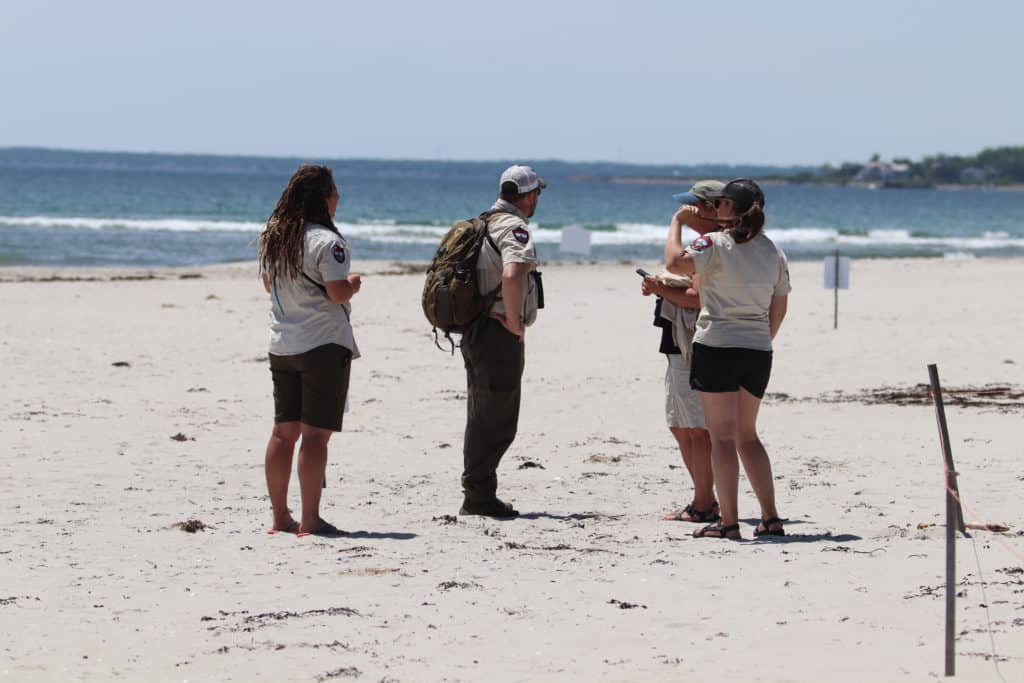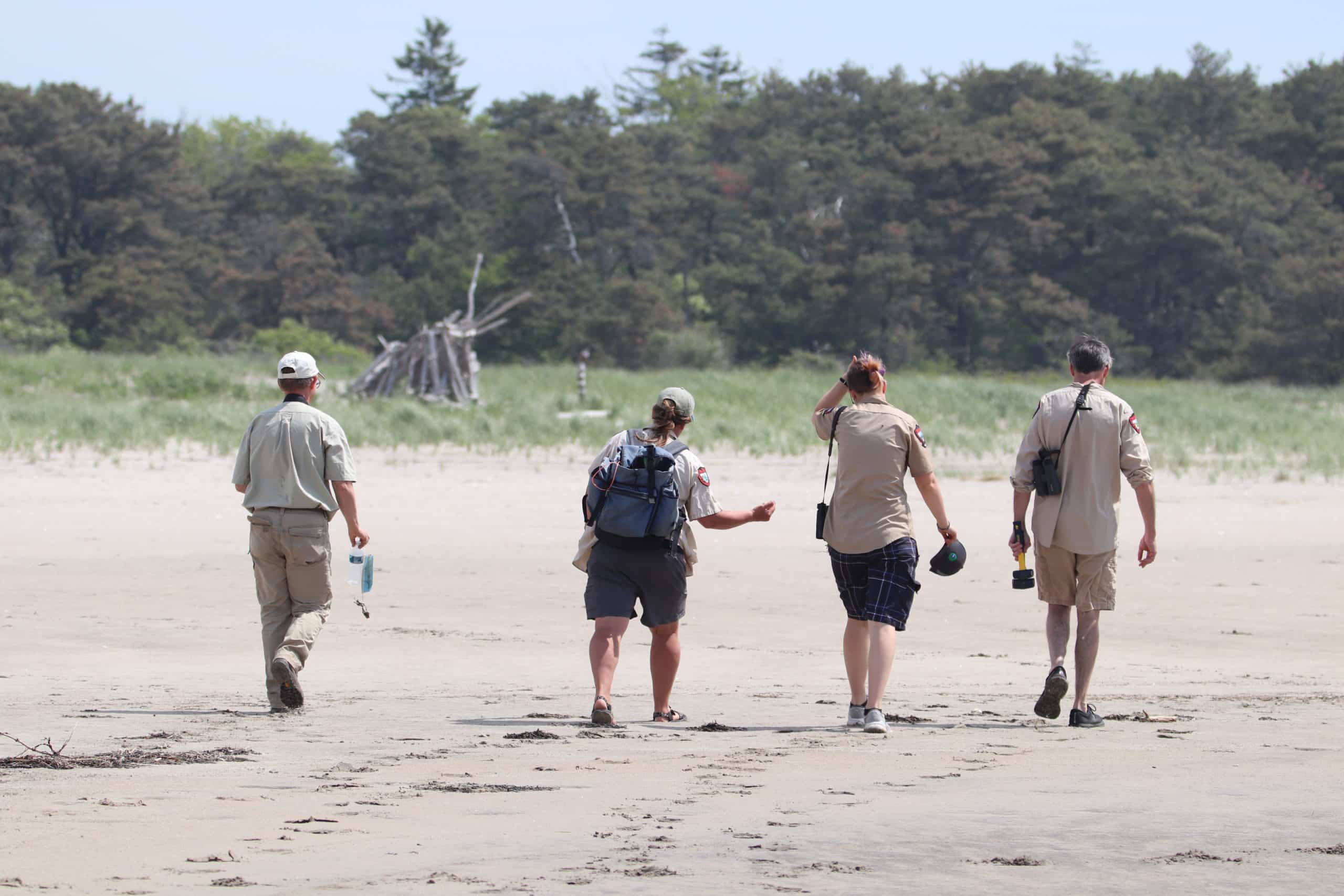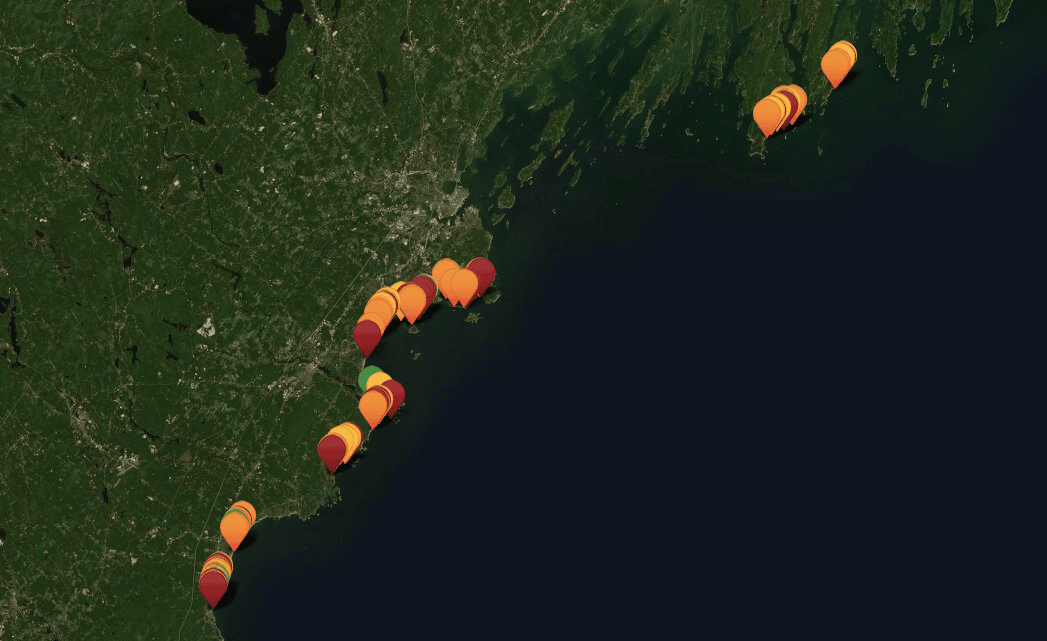
Over 120 pairs of endangered piping plovers (Charadrius melodus) were recently counted during the annual Piping Plover Census: a combined effort led by Maine Audubon, U.S. Fish and Wildlife Service, Maine Department of Inland Fish and Wildlife, and a diverse network of volunteers. Monitors traveled to 38 sandy beaches throughout the state to tally adult plovers, pairs, nests, and chicks.

Estimating piping plover breeding pairs throughout Southern Maine’s extensive coastline comes with its own set of obstacles. At this point in the season, there are still unsettled pairs seeking out new suitable habitat to nest. Flooding from high tide events or nest predation has contributed to the number of breeding pairs re-nesting for the second or even third time this season. Predation of adult plovers can also leave single birds searching for new mates to breed in later months.
Without defined nesting territories, it can be harder to track the movements of these birds between local beaches and the locations where scrapes or practice nests are found. For example, in the time it takes to drive from Fortunes Rocks to Hills Beach in Biddeford Pool, a piping plover could have flown back and forth between the two beaches and been counted twice in the process.

Despite these potential sources of error, consistent monitoring by Maine Audubon’s Coastal Bird Crew and Rachel Carson National Wildlife Refuge since the beginning of April proved very useful to confirm recent census observations. The first Piping Plover Census in 1981 revealed only 10 pairs of birds in the state. Fast forward to 2021, and over twenty new pairs of piping plovers counted on Maine beaches compared to last year’s total of 98, reaffirms that continued efforts to protect this endangered species are crucial for New England populations to rebound.
Photography by Sarah Geisler.
